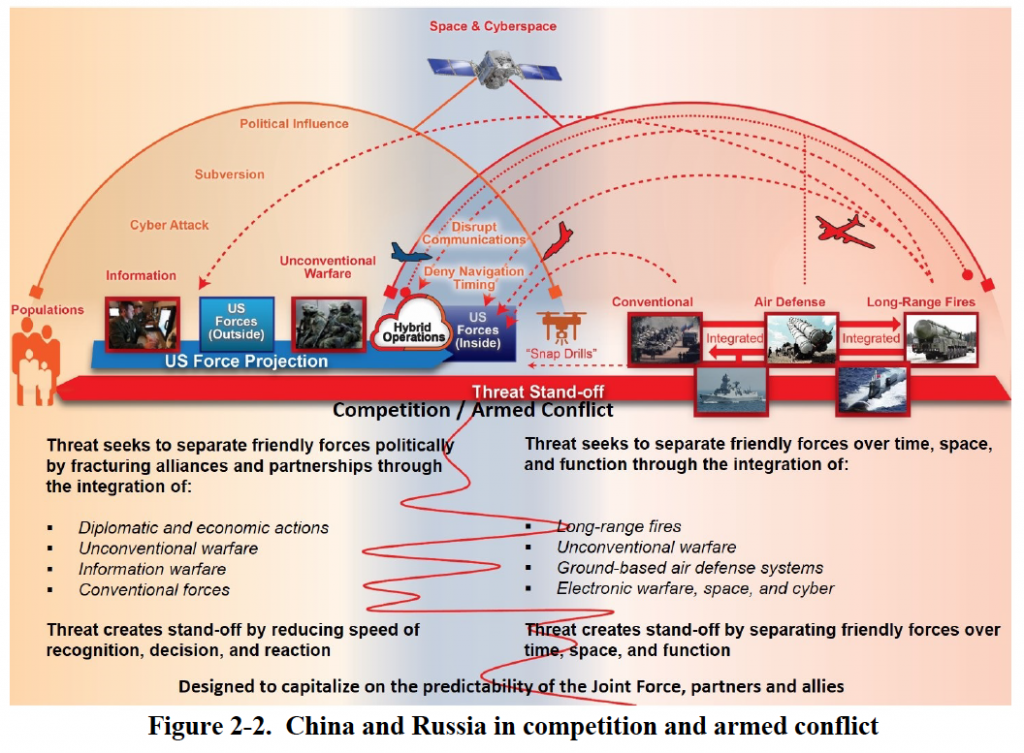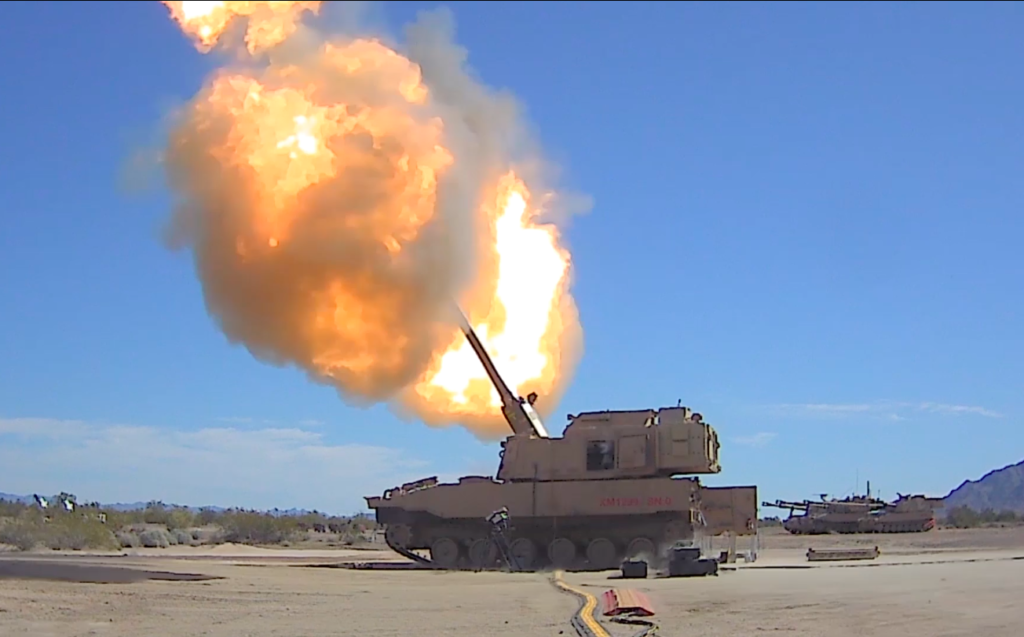WASHINGTON: Automating the flow of data from satellites in orbit to artillery on the ground is a tremendous task, with some surprising little glitches.
In the Army’s ongoing Project Convergence exercises, the ADV ground terminal relaying satellite data uses eight-digit grid coordinates, but the AFATDS fire control software uses 10-digit grids. A software patch is in the works — but for now, one soldier told me, a soldier has to make the fix: “The operator has to go in there and add a zero.”

Willie Nelson addresses a Defense News webcast
Other obstacles are more intractable. Some private-sector satellite imagery systems allow automated tasking. When a customer such as an Army unit requests a picture of a certain area, the company’s software automatically tasks the appropriate satellite, which quickly takes the picture and sends it to the customer. Military and intelligence satellites aren’t generally set up to do that, explained Willie Nelson, the lead on space for Army Futures Command: “There’s human intervention in terms of the actual tasking.”
That’s an institutional issue as well as a technical one, because the Army doesn’t operate its own satellites and doesn’t intend to. The Intelligence Community long tasked satellites using a small committee led by NGA whose decisions were highly classified. So I asked Nelson if Army operators were able to task Air Force, Space Force, and intelligence agency satellites.
“‘Task’ is sometimes a sensitive word, [because] people have a lot of different definitions of what that means,” he replied. In Project Convergence, he said, “what we are able to do is specifically request ISR [Intelligence, Surveillance, & Reconnaissance] information for a specific area and then be able to very rapidly receive that information back.”
The Army doesn’t intend to stop there, though, Nelson said: “We’re developing prototypes [that will] directly take the tasking from a TITAN [ the Army’s future multi-purpose ground terminal], take a picture, [and] send that directly back down to the TITAN.”
That’s in the future, though. The system in use right now for Project Convergence is only partially automated – but, Nelson told me, it’s still dramatically faster than traditional processes. His boss, Army Futures Command’s Gen. John Murray, has boasted that the time from a satellite detecting a target to artillery firing on it has dropped from “tens of minutes” to “10-20 seconds.”
That’s a tribute to both technology and the people who have to make it work despite its imperfections – not just in the Army, but in the other services and intelligences agencies that control the satellites.
“I’ve been at this for almost 30 years,” Nelson told me. “I have never in my life seen the cooperation between the agencies that we’re working with, and the services in general, all the way down across the Army.”
“This is real data being passed, and real guns and ordnance on the range” at Yuma, he said. “What we’re demonstrating, which is incredibly exciting, is the ability to seamlessly integrate these systems… from space to mud.”
“It’s absolutely fundamental to how we’re going to have to fight in the future,” Nelson said. “Time is everything.”
In both World Wars, artillery commanders often lined up their guns side by side and bombarded a target for hours. Modern militaries like Russia and China practice “shoot and scoot” tactics where they quickly fire a few guns or long-range missile launchers – some of these weapons can precisely strike targets hundreds or even thousands of miles away – and then just as quickly pack up and move on, seeking to avoid retaliation.
(Firing gives away your position because a modern enemy can track the trajectories of incoming rounds on radar and can quickly calculate where they came from; larger missile launches can be spotted by satellites as well).

SOURCE: Army Multi-Domain Operations Concept, December 2018.
“They know that we’re looking for them so they’re going to shoot and scoot pretty quick,” Nelson told me. “It really compresses that amount of time … to do that entire mission thread” from detecting a target to firing on it.
One key to compressing the timeline is artificial intelligence. Specifically, it’s a machine-learning system called Prometheus, developed in large part by the Army’s Artificial Intelligence Task Force and its ISR Task Force, which sorts through masses of satellite imagery and other data to find targets, even camouflaged and hidden ones, far faster than human analysts can.
That’s a daunting task for anyone, human or machine. “We train analysts for years to do an incredibly complex job,” Nelson said. “You’ve got to train a computer to think and reason with, in some cases, imperfect information.”
But with Prometheus trained up, it can replace large teams of human analysts. Those teams usually have to be housed in centralized locations on US territory, relying on satellites and undersea cables to share data with forward-deployed forces over thousands of miles of miles – creating ample opportunities for technical problems or enemy attack to disrupt communications.
In Project Convergence, by contrast, Prometheus is running alongside the ADV terminals at a theater HQ, Joint Base Lewis-McChord in Washington, which transmits the data over Army tactical networks to frontline units at Yuma Proving Ground in Arizona. That’s more than 1,300 miles, a daunting distance — until you compare it with the 4,000 miles from the US mainland to Poland, 5,000-plus miles to South Korea, or 6,000-plus to the Middle East.
“Imagery [analysis] that would need hours and hours and hours of analyst time stateside… we’re able to do that in theater very rapidly now,” Nelson said, “and we’re able to seamlessly integrate that information directly into the … weapons systems.”
In Prometheus’s first big test, early this year in Germany, the system provided targeting data to M777 towed howitzers and MRLS tracked missile launchers. In Project Convergence, it’s also feeding the prototype ERCA tracked howitzer and MQ-1C Grey Eagle drones.

The prototype M1299 ERCA armoured howitzer test-firing at Yuma Proving Ground on March 6, 2020.
This is the first time Prometheus connected to an aerial asset, which uses a different network and software than the artillery’s AFATDS. The system can not only help Army aircraft find and strike their targets, Nelson said, but warn them of enemy surface-to-air missile launchers so the aviators can avoid them before they come under fire.
In the near future, Nelson said, Prometheus will link to manned helicopters like the AH-64 Apache and a variety of other systems, both air and ground. Ultimately, Nelson said, AI targeting will send and receive data even with the IVAS goggles being issued to individual foot soldiers.
The Army also wants to bring in other services’ systems, Nelson said, such as the F-35 Joint Strike Fighter. The goal is to also have Army systems provide targeting data to the fighters, not just receiving, and for a much wider variety of targets. In earlier tests, F-35s spotted incoming missiles for the Army’s IBCS missile defense system.
“In the future, we see that data being shared … with all of our joint forces,” Nelson told me, “and you can take that one step further, and that is coalition”: feeding data to America’s allies and partners abroad.
While the 2020 Project Convergence is primarily an Army affair — with the significant exception of those satellites — a second exercise next year will bring in the Air Force’s ABMS Joint All-Domain Command & Control network, while Project Convergence 2023 will add allies, with Britain and Australia already expressing interest.






















